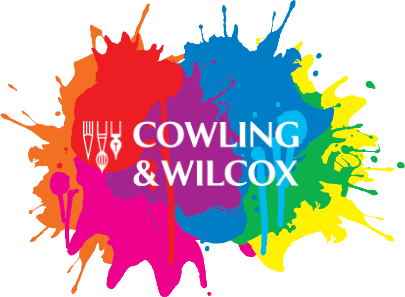Our latest Featured Artist is the delightful Emma Block, an illustrator with a standout style that we’re very big fans of.

How did you get started as an artist?
I’ve always loved drawing, painting and making things so it seemed natural that I would have a career in the arts. After finishing my GCSEs I did a national diploma in art and design instead of a levels, then went on to study Illustration at university. I started my blog then I was 16 and started selling my work at 17.
What inspires you to be creative?
I’m one of those people who gets inspired by everything. Sometimes I actively seek inspiration by visiting museums and galleries, but a lot of the time it’s things like watching old films, seeing someone with a great outfit or a great dog, or just walking around London.
How would you describe your creative process?
It’s quite an intuitive process. I normally have quiet a clear image in my head of what I want the finished illustration to look like, so I use a combination of gouache, water colour, ink and coloured pencils to try to recreate that image.
I normally start with research and sketching. I never copy things exactly from photos, but I do find it helps to do a bit of research before I start. I normally sketch really loosely first, then neaten up the sketch as I go along.

What is your favourite medium to work in and why?
I love working with gouache, I like the flat, opaque areas of colour you can create. It’s actually quite a versatile medium and I use it along with watercolour and coloured pencils.
How do you tackle a blank canvas?
I get quite intimidated by a blank canvas, which is why I usual start by sketching very loosely onto cheap printer paper. It’s very easy to scan and to use with a light box.

What do you find the most challenging about the creative process?
Coming up with ideas can be harder that physically creating the art. I recently did a large project that required me to create complex images that told a story and worked in a sequence, but also worked individually. Working out what image should be was quite tricky. I spend ages thinking about that and talking it over ideas with my editor.
In which ways do you differentiate your work from that of other artists?
My work is like my handwriting, it comes very naturally and feels very authentic to me. I think the way I mix different materials also makes my work quite different.
What are your essential tools?
I couldn’t live without my mechanical pencil, paints, my scanner, my Wacom tablet and my iMac.
How would you describe your studio/work space?
I try to keep my studio tidy and organised. It might get messy during the day but I always like to start the morning with a tidy desk. I like to have all my many materials (watercolours, gouache, coloured pencils, drawing ink, pens, brushes etc.) as close to hand as possible.

Any tips for preparing a portfolio?
Create the kind of work you would like to be commissioned to do. If it’s your dream to illustrate a children’s book, illustrate a few spread from your favourite fairy tale. If you want to do book cover redesign the cover for your favourite book.
Do you have a favourite art tip that you can share with our readers?
Experiment with your art materials, what works for someone else might not work for you. I have my favourite brands but I love trying new type of brush or paper. Sometimes when you’re not getting the effect you want you just need to practice more, but sometimes you just need to try some different materials.
Where can our readers find out more about you?
You can find out more about me on my website and my blog. You can also find me on Twitter, Instagram and Etsy.
< Back to blog



















